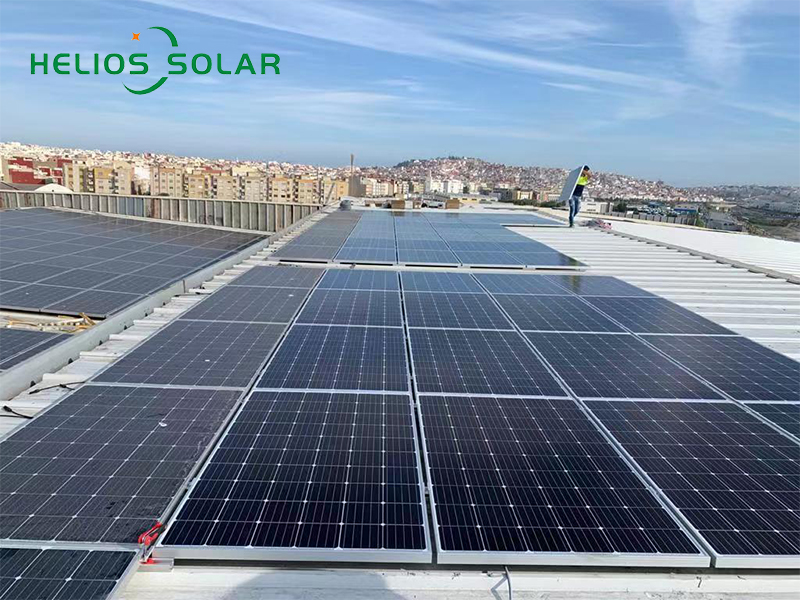With growing concerns about climate change and the importance of renewable energy, solar panels have become a popular and effective solution for clean electricity. Among the various types of solar panels in the market, monocrystalline solar panels have gained a lot of attention due to their efficiency and cost-effectiveness. In this article, we explore the practicality of monocrystalline solar panels and how they can contribute to the green revolution.
To understand the purpose of monocrystalline solar panels, it is necessary to discuss their composition and function. Monocrystalline solar panels are made from a single crystal structure (usually silicon) that increases the efficiency of converting sunlight into electricity. These panels have a uniform appearance due to the consistent composition of the crystal structure. This uniformity improves their performance and makes them more reliable in generating electricity, especially in regions with harsh climatic conditions.
High efficiency
One of the main advantages of monocrystalline solar panels is their higher efficiency compared to other types. These panels can convert a greater percentage of sunlight into usable electricity, thereby generating more electricity. This increase in efficiency means that a smaller area of monocrystalline silicon panels can generate the same amount of electricity as a larger area of other types of solar panels. Therefore, monocrystalline panels are the first choice when roof space is limited or power demand is high.
Long lifespan
Another important factor that increases the usefulness of monocrystalline solar panels is their long lifespan. Known for their durability, these panels can last over 25 years if maintained properly. The extended service life makes it a cost-effective investment in the long run. In addition, some manufacturers offer a warranty period of up to 25 years to ensure the reliability of monocrystalline silicon panels.
Minimal maintenance
While the initial cost of installing a monocrystalline solar panel may be slightly higher than other types of solar panels, this higher expense is more than offset by the higher efficiency and longer lifespan. Over time, the return on investment is significant as the panels generate more power and require minimal maintenance. Additionally, as technology has improved, the cost of monocrystalline solar panels has gradually come down, making them more accessible to homeowners and businesses.
Reduce carbon emissions
Furthermore, the uses of monocrystalline solar panels are not limited to financial benefits. These panels help reduce carbon emissions and dependence on fossil fuels. By harnessing solar energy, monocrystalline silicon panels can generate clean and sustainable electricity, making them an essential part of the green revolution. They provide environmentally friendly solutions to meet growing energy demands while minimizing the environmental impact associated with traditional electricity sources.
In conclusion, monocrystalline solar panels are undoubtedly useful for harnessing the sun’s energy and generating electricity. Their higher efficiency, longer service life, and contribution to the green revolution make them an attractive choice for individuals and businesses. Monocrystalline solar panels play a vital role in reducing carbon emissions and promoting renewable energy as we work towards a sustainable future. The adoption of monocrystalline solar panels is expected to continue to grow as technology advances and costs decrease, driving us toward a greener, cleaner future.
If you are interested in monocrystalline solar panels, welcome to contact solar panel manufacturer Radiance to read more.
Post time: Jun-30-2023


